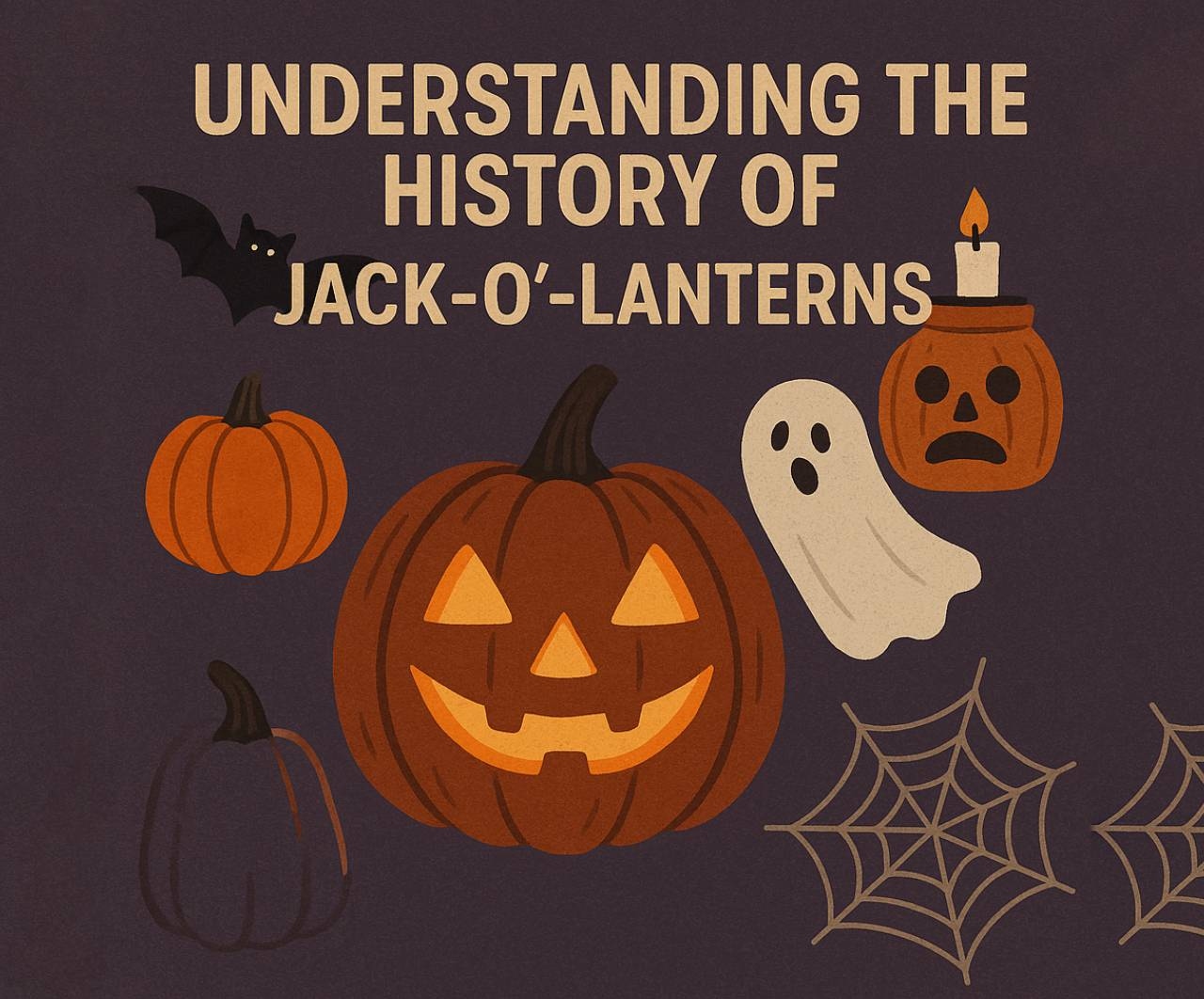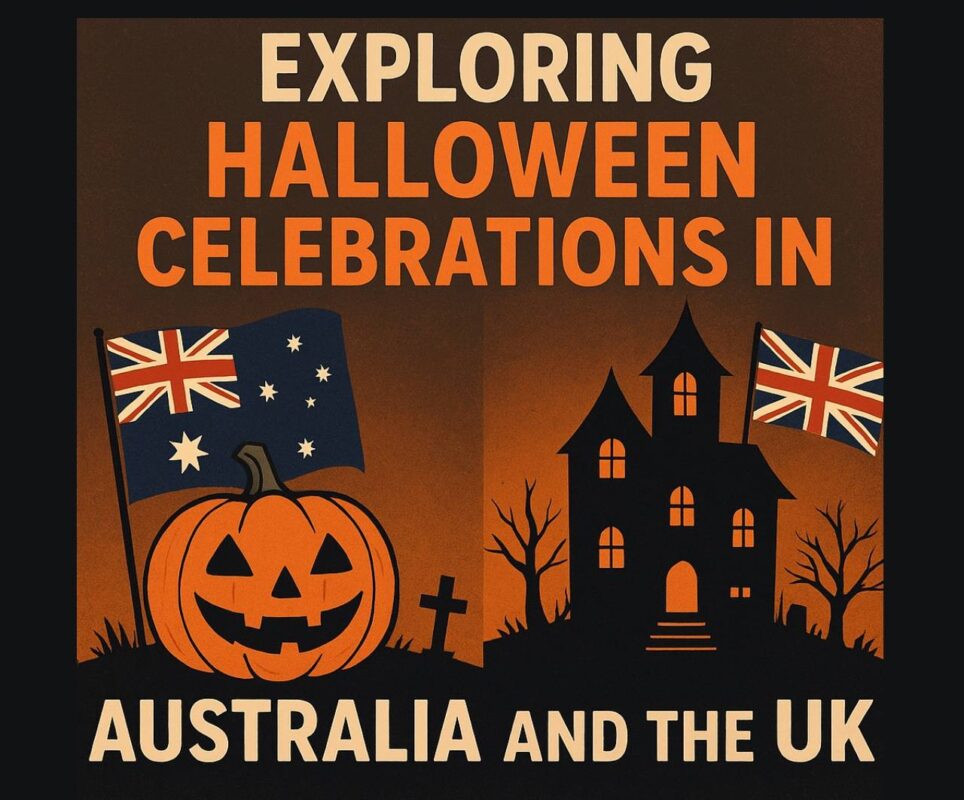Understanding the History of Jack-o’-Lanterns

As the crisp fall air begins to settle in and Halloween approaches, one symbol remains at the forefront of the season’s celebrations—the Jack-o’-lantern. These glowing, carved pumpkins, traditionally placed on porches and windowsills, have become a staple of Halloween decor, lighting up the dark with their eerie expressions. But how did this iconic symbol come to be? The history of Jack-o’-lanterns dates back centuries, rooted in both Irish folklore and ancient traditions. From their humble beginnings as hollowed-out turnips to their transformation into the iconic pumpkins of today, Jack-o’-lanterns are steeped in rich history and meaning. In this article, we’ll explore the origins and evolution of these spooky lanterns, shedding light on their cultural significance and how they’ve become synonymous with Halloween celebrations. Know more..
The Origin of Jack-o’-Lanterns: A Tale of Irish Folklore
The story of the Jack-o’-lantern begins in Irish folklore, particularly with the tale of a man named Stingy Jack. Legend has it that Jack was a mischievous trickster who was known for outsmarting people and even the devil himself. One version of the tale suggests that Jack tricked the devil into climbing a tree and then trapped him by carving a cross into the bark, making it impossible for the devil to descend. As a result of his actions, when Jack died, he was denied entry to both Heaven and Hell. Instead, he was condemned to wander the Earth in darkness for eternity. The devil, begrudgingly, gave Jack a small piece of burning coal to light his way, which Jack placed inside a carved-out turnip, creating the first “lantern.”
This tale gave rise to the tradition of carving faces into root vegetables, with the Jack-o’-lantern serving as a symbol of Jack’s eternal wandering and a way to ward off evil spirits. People in Ireland and Scotland would carve faces into turnips or other root vegetables and place them in their windows or along pathways to keep Jack’s restless spirit—and other malevolent forces—at bay. The glowing lantern was believed to ward off evil spirits, and this practice became a key part of ancient Samhain celebrations, which marked the end of the harvest season and the beginning of the darker, colder months.
The Evolution of Jack-o’-Lanterns: From Turnips to Pumpkins
When Irish immigrants brought the tradition of carving lanterns to America in the 19th century, they discovered that pumpkins, which were more abundant in the New World, were much easier to carve than turnips. Pumpkins, with their large size and soft flesh, quickly became the preferred vegetable for creating Jack-o’-lanterns. While the turnip was once the quintessential choice for a Jack-o’-lantern, pumpkins allowed for more intricate designs and larger, more visually striking lanterns.
The adoption of pumpkins marked a significant shift in the visual identity of the Jack-o’-lantern. Pumpkins, with their round shapes and vibrant orange color, provided a brighter, more cheerful glow than the often dim and eerie light that turned-up turnips emitted. This shift in materials also coincided with changes in the way people celebrated Halloween. What was once a solemn and mystical tradition rooted in honoring the dead evolved into a more festive occasion, with pumpkins symbolizing harvest celebrations and the playfulness of Halloween.
The Symbolism of the Jack-o’-Lantern
Over time, the Jack-o’-lantern took on various meanings and representations, becoming more than just a spooky decoration. The carved face, often displaying expressions ranging from sinister grins to joyful smiles, became a symbol of the complex relationship between the living and the supernatural.
- Protection from Evil Spirits: The primary historical function of the Jack-o’-lantern was to ward off evil spirits. According to folklore, the flickering light inside the carved pumpkin was thought to protect homes from the wandering spirits of the dead, who were believed to be especially active during Halloween. The glowing light acted as a beacon, guiding lost souls to the afterlife and preventing malevolent spirits from entering the home.
- The Harvest and the Cycle of Life: In pre-Christian Ireland, Samhain (the precursor to modern Halloween) was a time to honor the dead and the harvest. The Jack-o’-lantern’s use during this time was linked to both the end of the harvest season and the transition into the darker months of the year. The pumpkin, a harvest vegetable, symbolized the cyclical nature of life and death, bridging the gap between the living and the dead.
- The Foolishness of Stingy Jack: Another layer of symbolism comes from the story of Stingy Jack himself. Jack’s eternal wandering and the fiery coal inside his lantern serve as reminders of the consequences of trickery, selfishness, and dishonesty. While the Jack-o’-lantern can be seen as a playful Halloween decoration today, it carries with it the legacy of Jack’s tale—a cautionary symbol of the afterlife and the fate of the morally compromised.
Jack-o’-Lanterns in Modern-Day Halloween Celebrations
Today, Jack-o’-lanterns are an inseparable part of Halloween celebrations across the world, especially in the United States. Carving pumpkins into intricate, creative designs has become a beloved Halloween tradition, and it has even evolved into an art form. From simple grins and toothy smiles to detailed works of art featuring ghosts, ghouls, and even pop culture references, the possibilities for Jack-o’-lantern designs are endless.
In recent years, the rise of technology has also influenced the evolution of Jack-o’-lanterns. LED lights have replaced traditional candles, making the lanterns safer and longer-lasting. Many people now use stencils and specialized carving tools to create more detailed and precise designs, elevating the tradition from a simple family activity to a competitive hobby. Some even go as far as to create entire pumpkin displays with hundreds of carved pumpkins arranged in elaborate scenes.
In addition to the traditional act of carving pumpkins, the Jack-o’-lantern also serves as a key element in many Halloween events. From pumpkin festivals to haunted houses, glowing Jack-o’-lanterns are used to set the mood and create spooky atmospheres. They appear in yard displays, street parades, and even in creative Halloween contests, further cementing their place in the fabric of Halloween culture.
Environmental Impact and the Future of Jack-o’-Lanterns
As Halloween celebrations continue to grow in popularity, so too does the environmental impact of the Jack-o’-lantern tradition. Pumpkins, while biodegradable, are often discarded after a few days of display, leading to an increase in food waste. In recent years, some environmentally-conscious consumers have begun exploring more sustainable alternatives, such as using real pumpkins for composting or opting for reusable, plastic pumpkin lanterns. These alternatives seek to preserve the tradition of the Jack-o’-lantern while minimizing waste.
Others have turned to digital technology, using LED-lit pumpkins or creating virtual Jack-o’-lanterns for online Halloween events. These innovations reflect the growing trend of blending traditional Halloween celebrations with modern technology, ensuring that the Jack-o’-lantern tradition continues to evolve for future generations.
Conclusion: A Tradition that Endures
From its origins in Irish folklore to its modern-day status as a symbol of Halloween, the Jack-o’-lantern has undergone centuries of transformation. What started as a humble turnip lantern to ward off evil spirits has evolved into a multifaceted symbol of Halloween—a holiday celebrated with both fun and reverence. The Jack-o’-lantern serves as a reminder of the harvest, the supernatural, and the stories passed down through generations.
As we carve our pumpkins each Halloween, we are participating in a tradition that connects us to the past while giving us the freedom to express our creativity. Whether you’re crafting a spooky scene or a friendly face, the Jack-o’-lantern will continue to shine as a beacon of Halloween spirit for many years to come.


